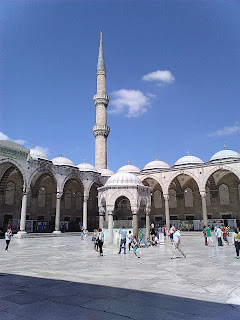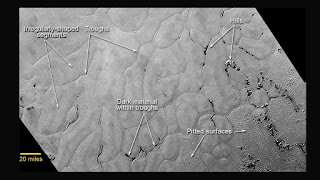Last week was on the peripatetic side, involving both North and Northeast (with a brief stop at home base in the south!). North was Delhi and Chandigarh. No long digressions on this one, having already appeared on this blog before. This is, however, the first appearance of the North east on this blog, except for peripheral references.
The Northeast excursion was to Manipur's capital Imphal, and its outskirts. While the journey is tedious, it can be surprisingly short, if you get the right connections (and incur the risk of missing one).
Coming out at Imphal blinking in the bright sunlight of the early afternoon into a small city in the middle of a flat valley, gives a sense of a culture which is very different from the plains with the influence of Myanmar, which lies barely 70 kilometres away, providing a strong flavour.
The first stop in the expedition was Kangla castle. Here the local museum firmly swept us out, literally with a broom, closing time being four p.m, and us having arrived at ten minutes to four. However, the rest of the castle made up for the loss(if it was one, we will never know!
) . The castle contains many monuments, new and old, places of worship, and is the location of many legends. The entrance is guarded by horned animals, whose bodies resemble the lions seen all over southeast asia, but the horns provide a new touch. There are two temples in the complex. One is the ancient temple of Govindaji which is more than a hundred years old. The deities of Radha and Krishna are no longer here, and are to be found in the Govindajee temple of the new palace. The other important temple is the temple of Pakhangba, an important deity of the indigenous religion of the Meitei, who is represented by the sacred snake sign. The palace also contains the sacred grounds of the Sani Mahi, another important deity of the region, to say nothing of a rock under which the devil has been trapped! Sani Mahism, the indigenous religion of Manipur, co-exists in Manipur with Hinduism, which was later adopted by the Hindu rulers. Every home contains a room dedicated to the Sani Mahi, who is worshipped with offerings of food, and vegetables, especially on the Manipuri new year day, which occurred during our visit. Sani Mahism can be found in Manipur, Bangla Desh, and Myanmar, and is staging a comeback to the region, with the Manipur Times recently reporting the `ghar wapasi' of a fairly large contingent.

The next day was more recent history. The India peace memorial at Red Hills, the scene of the last battle between the Indian Army and the Japanese Army, with Indian troops on both sides. The memorial, built by the Indian and Japanese governments, commemorates those who died in this battle.
Even more historic is the Indian National Army memorial in Moirang, where the INA flag was first flown, with Netaji Subhash Chandra Bose's statue, and a museum which contains the proclamation of
the INA Government, and other historic photos and documents.
Finally some natural beauty, Loktak lake, the largest freshwater lake in India, with floating islands which are large enough to support settlements. Altogether a lovely trip, with new and old friends, and much yet left to explore, and hopes of another visit. BTW, we did some essential work too!
This blog post by Neelima Gupte and Sumathi Rao.
























